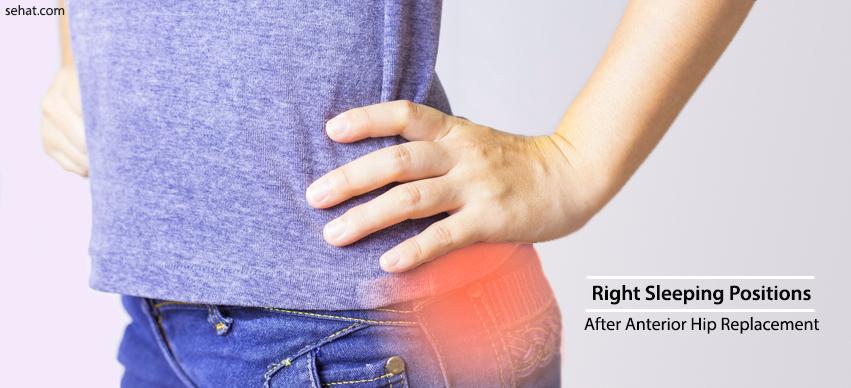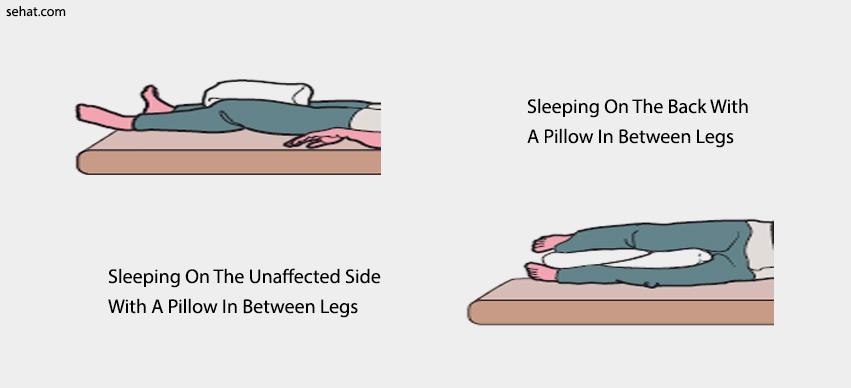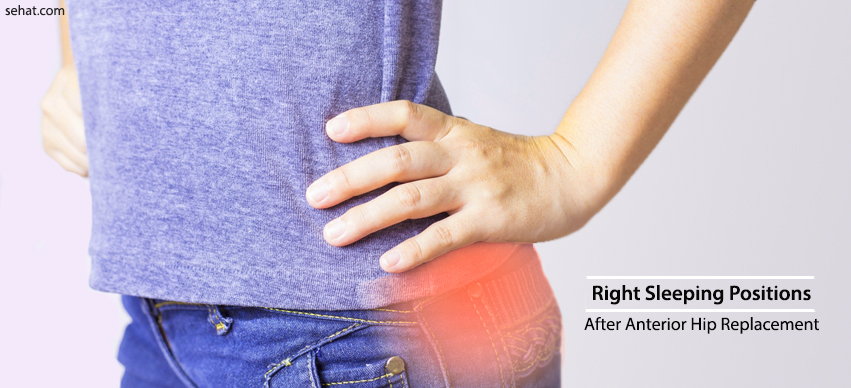
Sleeping positions are critical in all types of hip replacement surgeries, whether traditional or anterior hip replacement. The patient may have trouble sleeping after hip replacement. Although the healing time and risk of dislocation are comparatively less in anterior hip replacement surgery, the patient should follow proper sleeping postures to avoid the slightest of complications. Read more to know about the right sleeping positions after anterior hip replacement.
Sleeping Positions After Anterior Hip Replacement

Hip replacement surgery is major surgery. In this surgery, the prosthesis replaces the natural hip. It is done because the natural hip gets damaged either due to disease or through normal wear and tear. Normally, the artificial hip lasts for about 15 years provided there are no post-surgical complications. To prevent post-surgical complications, the patient has to strictly follow the directions of the orthopedic surgeon. Out of many instructions to be followed, some instructions are more critical than the others that may affect the outcome of the surgery. Sleeping posture is one of those critical parameters that if not followed properly, may lead to revision surgery. At the least, poor sleep posture. after anterior hip replacement may develop chronic pain that may last throughout life.
Thus, the patient should learn about various sleeping positions after anterior hip replacement that should and should not be practiced. The sleeping posture should be such that it should not interfere with the natural healing process as the bone tissues get damaged during the hip replacement surgery. Sleeping is a must for the patients to allow the body to get proper rest. It also helps in reducing emotional stress and improves overall healing. Thus, it is important that you should incorporate the proper sleeping postures into your routine as soon as possible. Further, the sleeping posture should not put pressure on the prosthesis as this may increase the risk of dislocation.
The following are the various sleeping positions to be followed by the patient who had an anterior hip replacement;
- Sleeping on the back is one of the best sleeping postures after anterior hip replacement surgery. However, do not forget to put a pillow between your legs as this will reduce the risk of twisting the legs. Twisting of legs may result in dislodging of the prosthesis from the socket. While sleeping on the back, you should keep the following advice in mind
- When you sleep on your back, always keep your toe pointing above. Do not twist your feet outward as this may put pressure on the hip.
- If you require to bend your legs, do not bend the leg which has undergone surgery. Further do bend the legs suddenly, rather bend it slowly to have minimum impact on the affected leg.
- In most cases, you are allowed to sleep on your side. Never sleep on the side of the affected leg. This may create intense pressure on the surgical site leading to pain and other complications. If you opt to sleep on your unaffected side, you should always line pillows in between your legs. This will help in reducing the pressure on the affected side and also prevent your upper leg from moving forward and backward.
Sleeping Posture Tips
- The primary aim of the sleeping posture instructions is to prevent the toes from twisting. The patient may not know that twisting the toe will ultimately lead to twisting of the hip joint leading to complications. Due to this, sleeping on the stomach is strictly prohibited in patients with anterior hip replacement surgery. The patient, while sleeping on the stomach, twist his toes to get in a comfortable posture which may result in dislocation of the affected hip. The patient should refrain from sleeping on the stomach at least for one-and-a-half months.
- Always sleep on the firm mattress or bed as this may minimize the pressure on the hip as well as prevent the stretching of muscles. Further, it will help in preventing the curved posture.
- If with a particular posture, you feel uncomfortable, you may change your posture. The new posture must be the allowable posture. Do not change the posture suddenly as it may lead to muscular stretch and may also put pressure on the affected leg. You should do it slowly either yourself or with the help of your family members.
- The hip replacement surgery requires a recovery period of at least six weeks. In order to get fast and accurate recovery, you should follow the sleep posture instruction for at least six weeks.
Instructions To Be Followed In All The Sleeping Postures
- Do not bend your knees towards the stomach to more than a 90-degree angle.
- Do not twist your knee outward in any sleeping posture.
- While sleeping, do not keep a pillow under knees after hip replacement. This will create pressure on the hips which may lead to delayed healing and also result in complications.
- Prefer to sleep on your back as this is the safest sleeping posture.
- Although the risk for complications is less in anterior replacement surgery as compared to conventional hip replacement surgery because of reduced damage to muscles but proper precautions are required in all types of hip replacement surgery.


